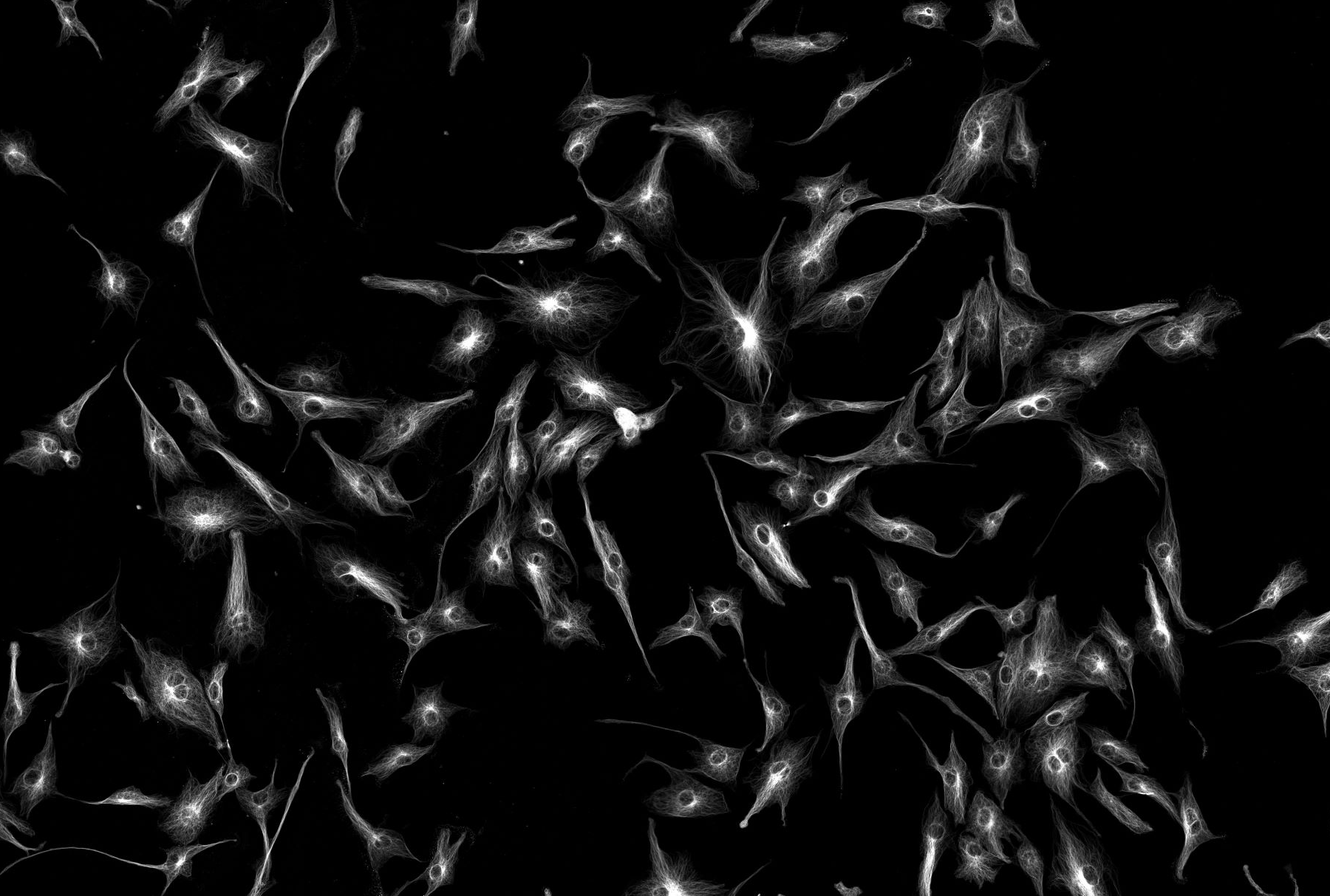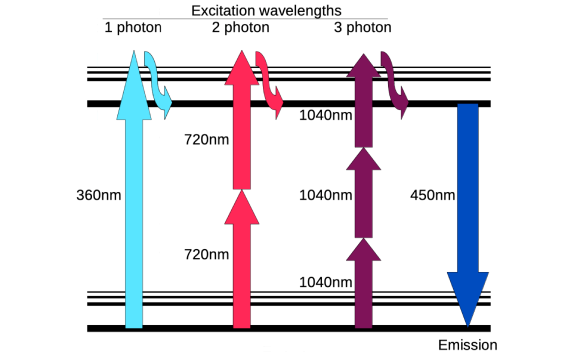Multiphoton Microscopy
MP microscopy is frequently used for 2 photon excitation, but 3 photon (or more) excitation is possible, and it can also be utilised in other NLO methods, such as Second Harmonic Generation, where two photons absorbed by a suitable material are ‘combined’ to produce one photon with the sum of the energy of the two initial photons. Many biological structures can generate second harmonics, particularly large ordered non-centrosymmetric structures, such as collagen, and can be imaged simultaneously with MP fluorescence.
Find out more:

